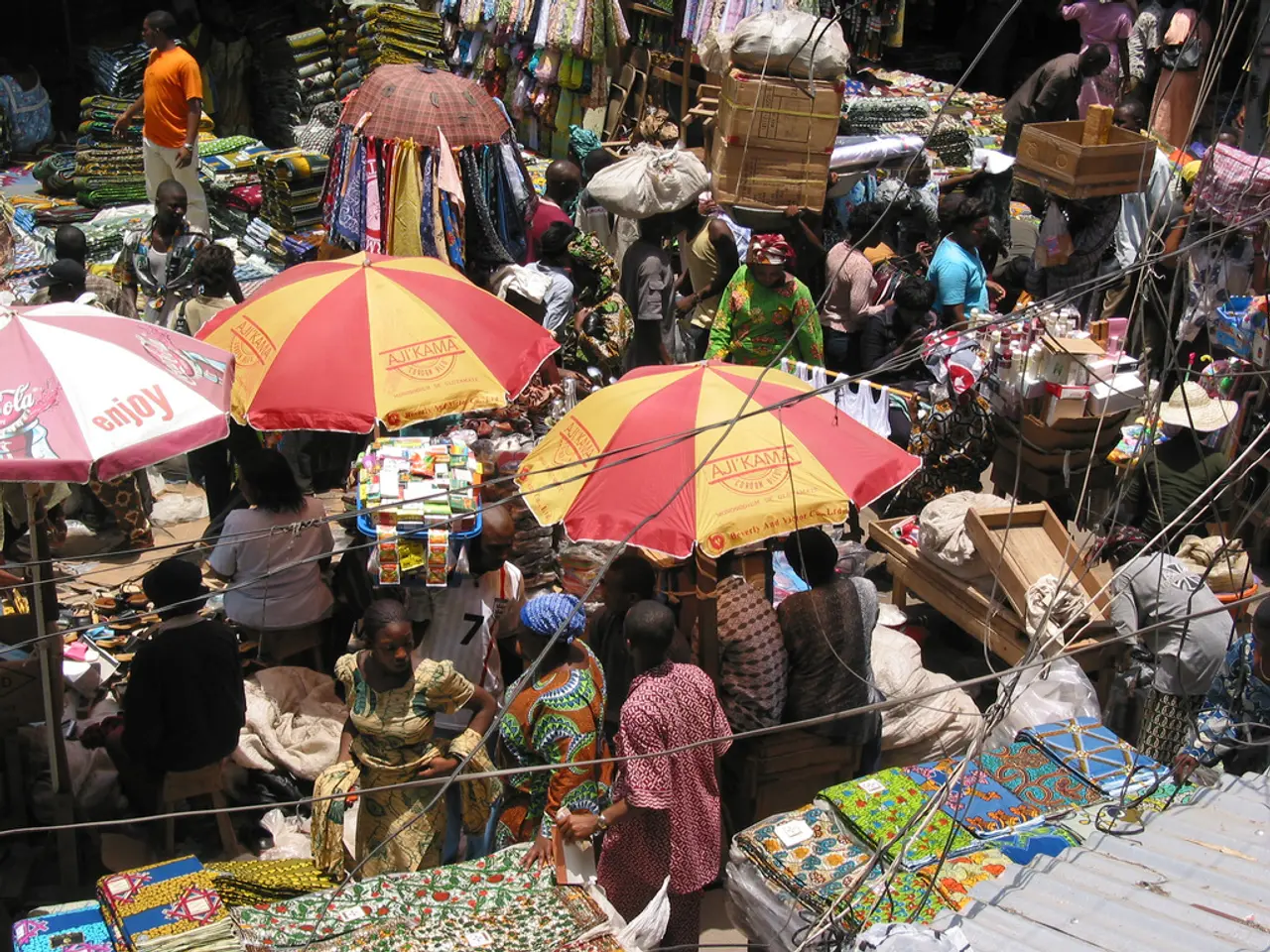Money Laundering Process Divided into Three Phases and Its Influence on Company Operations
Money laundering, the process of concealing the origin of money obtained from illicit activities, is a global concern that costs the world economy between $754 billion and $2 trillion each year, according to the United Nations Office on Drugs and Crime (UNODC).
This criminal activity is divided into three stages: Placement, Layering, and Integration (also known as Extraction).
Placement is the initial stage, where criminal proceeds are introduced into the financial system. Common methods include depositing cash into bank accounts, using cash to buy assets, or introducing illicit funds into casinos or businesses that deal largely in cash. The goal is to move illegal money away from the crime scene without raising suspicion.
Layering is the next stage, where the origin of the funds is obscured through complex financial transactions. Techniques include multiple transfers between various bank accounts, often across different countries to exploit jurisdictional loopholes; using shell companies that exist only on paper to mask ownership and the movement of funds; buying and selling assets to create confusing paper trails; electronic fund transfers; and offshore accounts. These transactions create multiple levels of complexity designed to make tracing the illicit funds difficult for authorities.
Integration (Extraction) is the final stage, where the laundered money is returned to the criminal in a seemingly legitimate form. Methods include investing in legal businesses, purchasing property or shares, selling these assets with proceeds that appear lawful, or arranging loans that are funded by the laundered money itself, with repayments made to simulate legitimate income streams. This makes the illicit funds appear "clean" and usable without triggering suspicion.
Each stage involves progressively sophisticated methods to safeguard the illicit origin of funds, moving from physical placement to layered obscurity and finally to a façade of legitimacy.
In the USA, the penalty for involvement in money laundering can reach $250,000 and up to five years' imprisonment. Notable cases include the €470 million ($495 million) fine imposed on Danske Bank in an international money laundering scandal.
Criminals also use sports to launder money, including football, cricket, rugby, horse racing, motor racing, ice hockey, volleyball, and basketball. Methods include purchasing and selling football clubs, player trades, involving football agents in ML schemes, selling player image rights, and forgery of ticket sales.
Other placement methods include false invoicing, blending illegal money with legitimate money, buying foreign currency, buying securities or insurance with cash, gambling, and betting on sports events.
To combat money laundering, financial institutions should implement thorough Anti-Money Laundering (AML) compliance programs. This includes Customer Due Diligence (CDD) and Enhanced Due Diligence (EDD), ongoing monitoring, independent AML audits, and transaction monitoring software.
However, the fight against money laundering is not just a financial battle. It is often linked to efforts against terrorism financing, because both money laundering and terrorism financing involve the redistribution of funds. According to the Financial Action Task Force (FATF), $1.6 trillion are laundered each year from lower-income countries, most often the proceeds of political corruption.
In the digital age, the fight against money laundering is more critical than ever. Awareness, education, and robust AML programs are essential to prevent the flow of illicit funds and maintain the integrity of the global financial system.
[1] UNODC (2021). Money laundering. [online] Available at: https://www.unodc.org/unodc/en/money-laundering/what-is-money-laundering.html [2] FATF (2021). Money laundering and terrorist financing risks. [online] Available at: https://www.fatf-gafi.org/topics/anti-money-laundering/risk-based-approach/ [3] European Central Bank (2019). European Central Bank publishes report on money laundering in the EU banking sector. [online] Available at: https://www.ecb.europa.eu/press/pr/date/2019/html/ecb.pr190620_1.en.html [4] Financial Conduct Authority (2021). Money laundering. [online] Available at: https://www.fca.org.uk/firms/money-laundering/what-is-money-laundering [5] Financial Action Task Force (2021). Glossary. [online] Available at: https://www.fatf-gafi.org/publications/fatfglossary/documents/money-laundering-and-terrorist-financing-technical-terms.html
Sports are commonly used by criminals to launder money, involving activities such as purchasing and selling football clubs, player trades, engaging football agents in money laundering schemes, selling player image rights, and forging ticket sales.
Robust Anti-Money Laundering (AML) programs, including Customer Due Diligence (CDD) and Enhanced Due Diligence (EDD), ongoing monitoring, independent AML audits, and transaction monitoring software, are crucial in combating money laundering not just in sports, but across various industries.






